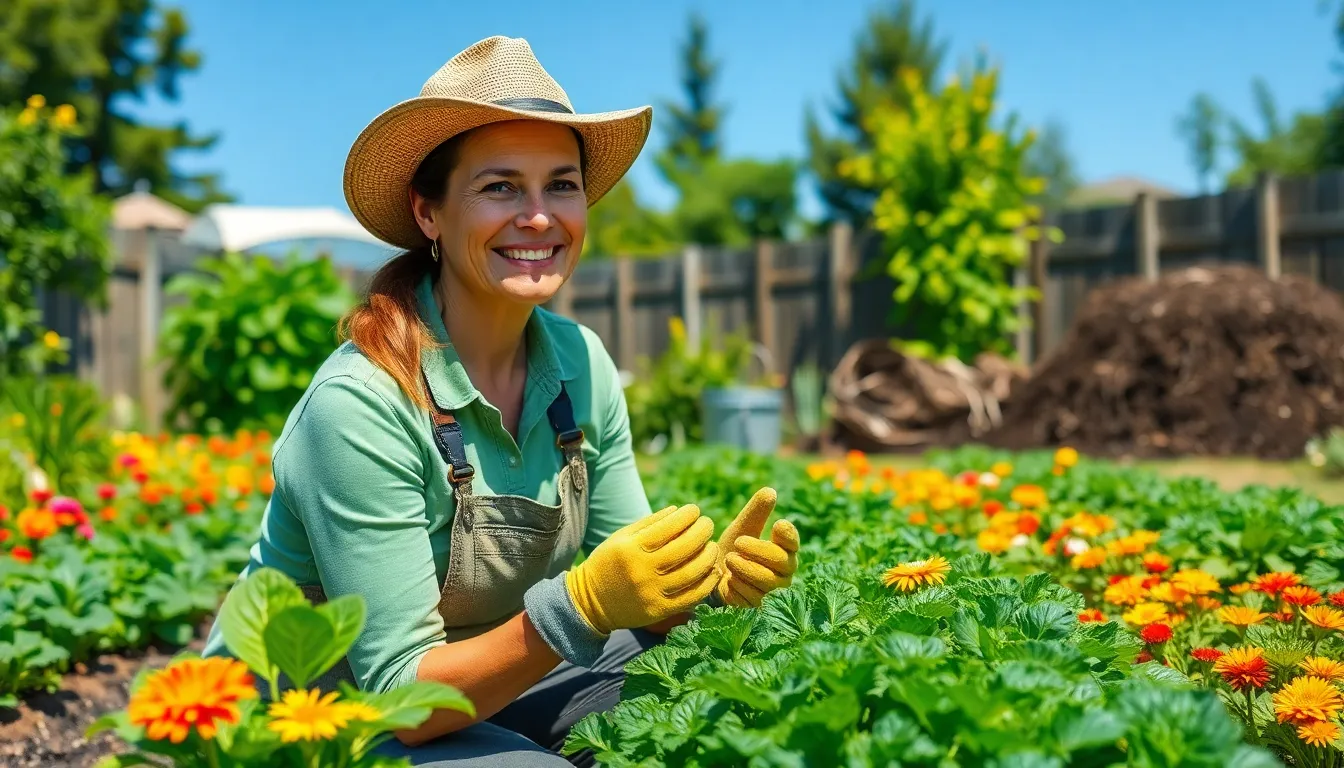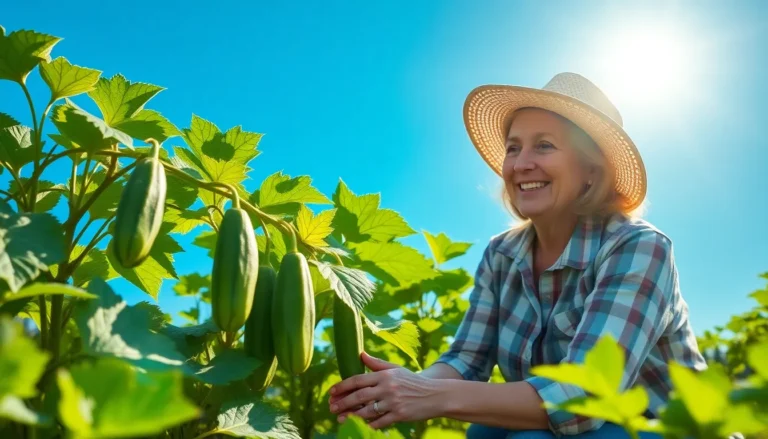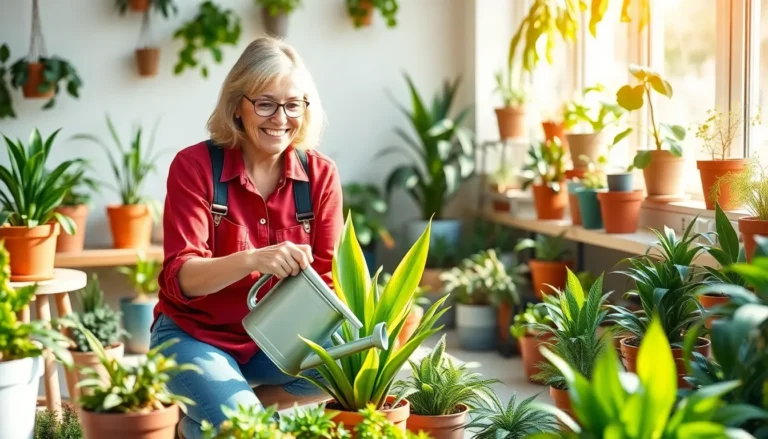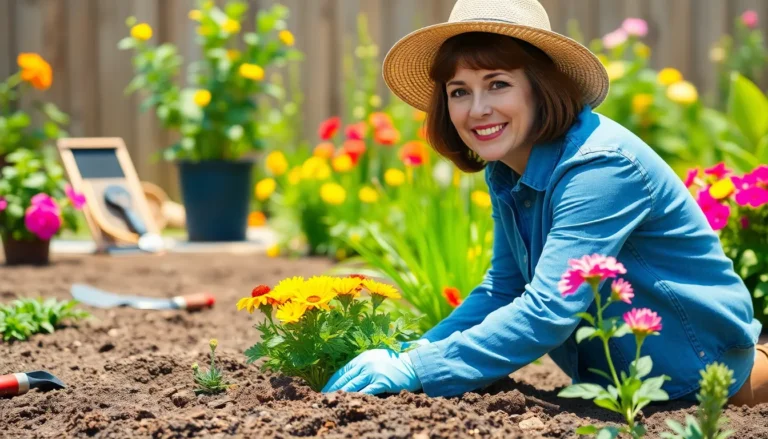Imagine stepping into your backyard and being greeted by a vibrant oasis of fresh veggies and fragrant herbs, all grown without a hint of chemical interference. Organic gardening isn’t just a trend; it’s a lifestyle choice that brings the farm to your doorstep, minus the muddy boots and questionable overalls. If you think you need a green thumb to dive in, think again. With a few simple tips, anyone can cultivate a thriving garden that even Mother Nature would be proud of.
Organic Gardening Tips
Organic gardening presents numerous advantages that benefit individuals and the larger ecosystem. It promotes sustainability, boosts personal health, and enhances the quality of life.
Environmental Impact
Organic gardening significantly reduces pollution and conserves water. It avoids harmful chemicals, which helps protect local wildlife and ecosystems. Soil quality improves through natural practices, encouraging biodiversity and resilience against pests. Carbon footprint decreases with local growing, minimizing transportation emissions. Pollinator populations thrive when gardeners avoid synthetic pesticides, fostering a balanced environment. Overall, organic gardening contributes positively to the natural world by promoting environmental stewardship.
Health Advantages
Health benefits of organic gardening are notable and diverse. Organic produce typically contains lower levels of pesticides, enhancing food safety. Nutritional content often remains higher in organic fruits and vegetables, providing essential vitamins and minerals. Gardening engages individuals in physical activity, supporting fitness and mental well-being. Freshly picked organic produce offers better flavor and quality, making mealtime enjoyable. Overall, cultivating an organic garden promotes a healthier lifestyle and provides nutritious food options.
Essential Tools For Organic Gardening
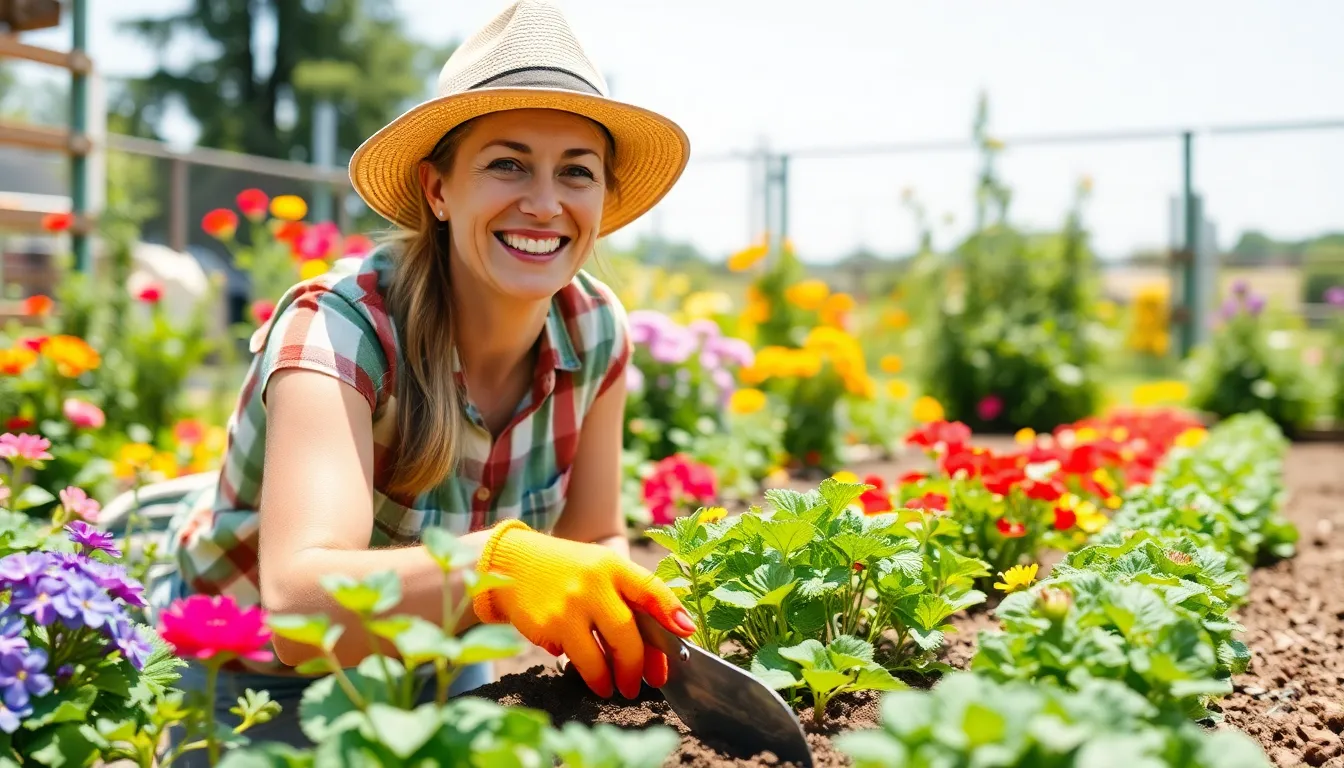
Having the right tools makes organic gardening efficient and enjoyable. Essential tools help maintain healthy plants and foster a thriving garden.
Hand Tools
Hand tools play a crucial role in organic gardening. A trowel, for instance, allows for digging and transplanting seedlings with precision. A hand fork helps aerate soil and remove weeds, promoting healthy root growth. Garden scissors aid in pruning herbs and flowers, ensuring plants thrive. Additionally, a hoe can cultivate soil and control weeds effectively. Each of these tools contributes significantly to a gardener’s toolkit, making tasks manageable and enjoyable.
Power Tools
Power tools streamline larger gardening tasks, improving efficiency. A tiller is essential for breaking up soil and mixing in compost, enhancing nutrients. A cordless leaf blower helps manage garden debris, keeping paths clear without disturbing the ecosystem. Electric pruners make cutting thick branches easy, saving time during maintenance. Furthermore, a power washer aids in cleaning garden tools and surfaces, preventing the spread of pests and diseases. These tools combine to simplify gardening efforts, ensuring optimal plant health and productivity.
Soil Preparation Techniques
Soil preparation sets the foundation for successful organic gardening. Proper techniques ensure nutrient-rich soil that supports healthy plant growth.
Composting Basics
Composting serves as an effective way to enrich soil naturally. Organic materials like vegetable scraps, grass clippings, and leaves create compost. Heaping these materials in a compost bin fosters decomposition. Regular turning accelerates this process, leading to nutrient-dense compost. Finished compost can improve soil structure, retain moisture, and boost microbial life. Gardeners should apply a two to four-inch layer of compost to garden beds annually for optimal results.
Mulching
Mulching plays a vital role in conserving soil moisture and suppressing weeds. Organic materials such as straw, wood chips, and shredded leaves work best. Applying a three-inch layer around plants retains moisture during dry spells. Weeds struggle to grow under mulch, easing garden maintenance. As mulch decomposes, it gradually enriches the soil, stimulating microbial activity. Gardeners can renew mulch annually to maintain effectiveness and keep gardens flourishing.
Plant Selection And Care
Successful organic gardening relies significantly on plant selection and care. Choosing the right plants for the local climate and soil type enhances growth and yield.
Choosing The Right Plants
Select plants that thrive in the local climate and soil conditions. Native species often adapt better, requiring less care and water. Diversity matters; incorporate a variety of species to enhance resilience against pests and diseases. Consult local gardening centers for suitable options or check regional plant hardiness zones. Focus on heirloom varieties for unique flavors and better nutritional value. Prioritize disease-resistant cultivars to minimize challenges during the growing season. Experiment with companion planting, as certain plants support each other’s growth and deter pests naturally.
Pest Management Strategies
Implementing effective pest management strategies proves essential in organic gardening. Encourage beneficial insects like ladybugs and lacewings that prey on harmful pests. Planting garlic or marigolds can deter unwanted insects due to their strong scents. Monitor plants regularly for early signs of pest infestations. Organic solutions like neem oil or insecticidal soap can help manage any outbreaks effectively. Utilizing crop rotation reduces pest buildup in the soil, supporting healthier plant growth. Maintaining healthy soil through composting strengthens plant defenses against pests. Engage in preventive measures to create a balanced ecosystem and minimize chemical interventions.
Seasonal Tips For Organic Gardening
Organic gardening requires attention throughout the seasons. Each period brings unique tasks and opportunities for gardeners to ensure healthy growth.
Spring Preparation
Spring marks the time for revitalizing the garden. Clearing debris from winter allows for better air circulation. Testing soil pH encourages optimized nutrient levels. Selecting healthy seedlings promotes vigorous growth during the growing season. Introducing organic fertilizers such as compost boosts soil vitality. Planting a diverse range of crops fosters resilience against pests and diseases. Consideration of local frost dates helps in determining planting schedules.
Summer Maintenance
Summer maintenance focuses on water management and pest control. Regular watering in the early morning minimizes evaporation. Mulching around plants conserves moisture and suppresses weeds effectively. Observing plants for signs of pests leads to early intervention. Utilizing beneficial insects like ladybugs provides natural pest control. Pruning encourages air circulation and healthy plant structure, enhancing overall growth. Harvesting ripe produce promotes continuous fruiting and blooming throughout the season.
Fall Harvesting
Fall signifies the time for harvesting and preparing for winter. Checking plants for maturity ensures optimal flavor and texture. Gathering seeds from heirloom varieties allows for future planting. Composting fallen leaves and garden waste enriches soil for next year. Cleaning tools and storing them properly extends their lifespan. Planning for winter cover crops helps protect soil during dormancy. Finally, documenting successes and challenges supports improved practices for the next growing season.
Sustainable Practices In Organic Gardening
Sustainable practices form the backbone of organic gardening. These strategies foster a healthier environment and enhance plant vitality.
Water Conservation
Effective water conservation techniques prove critical in organic gardening. Implementing drip irrigation systems directs water to the roots, minimizing evaporation and runoff. Rainwater harvesting enables the collection of water during storms, creating a sustainable water source for gardens. Using mulch retains soil moisture, reducing the frequency of watering. Grouping plants with similar water needs maximizes efficiency, ensuring plants receive adequate hydration without waste. Additionally, monitoring soil moisture helps determine the right time for watering, which conserves this precious resource.
Biodiversity Promotion
Promoting biodiversity contributes to a thriving organic garden. Planting a variety of species attracts beneficial insects, aiding in natural pest control. Using native plants ensures that they thrive in local conditions while requiring less maintenance. Crop rotation prevents soil depletion by varying plant families each season, maintaining soil health. Creating habitats for pollinators with flowering plants enhances pollination, increasing crop yields. Incorporating companion planting strategies encourages symbiotic relationships between plants, boosting overall garden resilience. Balancing plant diversity strengthens ecosystems, providing a natural defense against pests and diseases.
Conclusion
Embracing organic gardening opens the door to a healthier lifestyle and a more sustainable environment. By following simple yet effective practices, anyone can cultivate a thriving garden that not only yields fresh produce but also supports local ecosystems.
The journey of organic gardening is filled with opportunities for learning and growth. From selecting the right plants to implementing efficient pest management strategies, every step contributes to a more resilient garden.
With patience and dedication, individuals can enjoy the rewards of their labor while making a positive impact on their health and the planet. Starting an organic garden is a fulfilling endeavor that enriches both the gardener and the environment.

